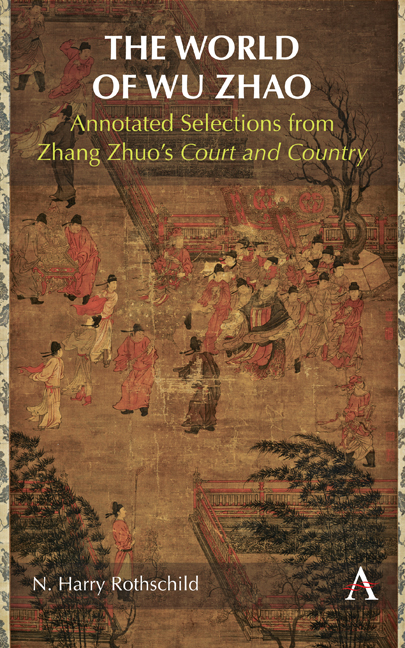Book contents
- Frontmatter
- Dedication
- Contents
- Acknowledgments
- Figures
- Map
- Tables
- Weights and Measures
- Introduction
- Chapter 1 Wu Zhao: her inner palace, her inner circle
- Chapter 2 The culture of the court
- Chapter 3 “Cruel officials”: Wu Zhao’s “teeth and horns”
- Chapter 4 Beyond court and capital: local officials
- Chapter 5 The common people
- Chapter 6 Relationships: men, women, and family in the time of Wu Zhao
- Chapter 7 Generals and military men
- Chapter 8 The frontier and beyond: foreigners and others during Wu Zhao’s reign
- Chapter 9 Religion and the supernatural world
- Chapter 10 Flora, fauna, and the natural world
- Afternote
- Appendix: People and Places
- Notes
- Bibliography
- Index
Chapter 10 - Flora, fauna, and the natural world
Published online by Cambridge University Press: 15 November 2023
- Frontmatter
- Dedication
- Contents
- Acknowledgments
- Figures
- Map
- Tables
- Weights and Measures
- Introduction
- Chapter 1 Wu Zhao: her inner palace, her inner circle
- Chapter 2 The culture of the court
- Chapter 3 “Cruel officials”: Wu Zhao’s “teeth and horns”
- Chapter 4 Beyond court and capital: local officials
- Chapter 5 The common people
- Chapter 6 Relationships: men, women, and family in the time of Wu Zhao
- Chapter 7 Generals and military men
- Chapter 8 The frontier and beyond: foreigners and others during Wu Zhao’s reign
- Chapter 9 Religion and the supernatural world
- Chapter 10 Flora, fauna, and the natural world
- Afternote
- Appendix: People and Places
- Notes
- Bibliography
- Index
Summary
IN THE EARLY TANG AND DURING Wu Zhao’s Zhou dynasty, the empire was vast, encompassing a range of climates, from the great central river valleys, the Yellow and the Yangzi, to the taiga, steppe, and desert along the northern borders, to rugged, sky-piercing mountains in the west and southwest, to the swamps and jungles of the distant southland. Concomitant to this panoramic range of environs, there was staggering biodiversity. There were, as environmental historian Robert Marks frames it, “numerous ecological niches where people could, and did, exploit the environment to sustain and reproduce themselves and their cultures.” Environment, to a degree, conditioned and dictated terms for human settlement; people, over time, altered the environment and sculpted the landscape. Edward Schafer remarks, “Even before Tang times, the ancient pines of the mountains of Shandong had been reduced to carbon, and now the busy brushes of the vast Tang bureaucracy were rapidly bringing baldness to the Taihang Mountains between Shanxi and Hebei.” The larger picture of the tension between environment and development was, according to Mark Elvin, “one of Han Chinese expansion up to natural limits—coasts, steppes, deserts, mountains, and jungles.”
Like virtually every premodern culture, in medieval China, the interaction between man and nature contains a built-in paradox: on a religious and spiritual plane, mountains and rivers were objects of veneration; on a utilitarian level, they afforded transportation and offered sources of food, resources, medicine, and irrigation. An eighth-century Tang scholar–official echoed one of the classics: “Mountains, swamps, forests, and salt are the treasures of the nation.” In the Tang, notions of the conservation and preservation of nature connected to Buddhism and Daoism sometimes influenced human behaviors. Tombs and temples were protected from hunting and harvest.
Ongoing warfare with steppe peoples (and the occasional occupation of the North by different groups of these peoples) prompted sustained instability in the Yellow River Valley during the centuries of division that followed the demise of the Han dynasty. In simplest terms, as Robert Marks frames it, “antagonism between nomadic pastoralists and agriculturalists” led to the deforestation and depopulation of the North and progressive colonization of the South.
- Type
- Chapter
- Information
- The World of Wu ZhaoAnnotated Selections from Zhang Zhuo's <i>Court and Country</i>, pp. 197 - 222Publisher: Anthem PressPrint publication year: 2023

